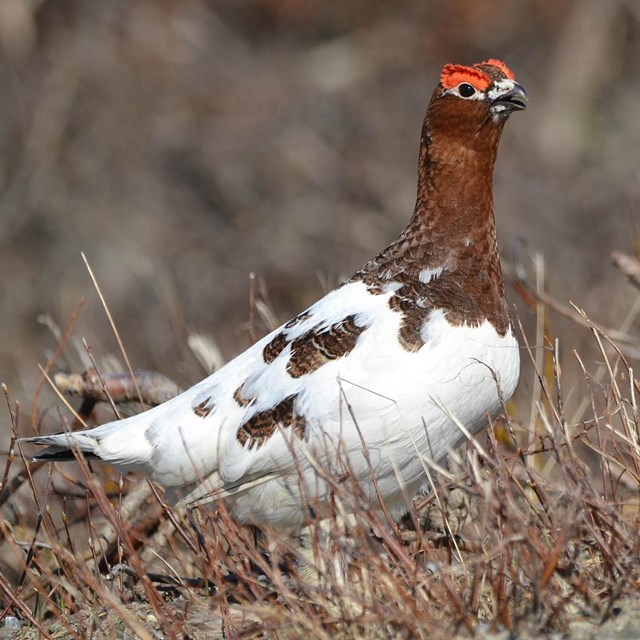
Middle row: Pacific golden plover, yellow warbler. Bottom row: Rock ptarmigan, Siberian bluethroat. NPS Photos The Seward Peninsula and Bering Land Bridge are enviable destinations for the serious birder. The varied topography results in 21 major avian habits where birds either live, migrate, winter, or breed. The proximity of the Seward Peninsula to Eurasia also allows occasional accidentals to be spotted in this region, along with unique opportunities to observe species in the crossroad of the Asiatic-North American flyway. Combine all these elements and you have a haven of over 170 bird species! Find more information on bird viewing, birding hotspots, and identification in Alaska from the Alaska Department of Fish and Game. Some Notable Species You may see the Sandhill Crane, which makes a trumpeting, rattling "gar-oo-oo" sound and is well known for its mating ritual dance. The horned lark, yellow warbler, and other small songbirds are heard before they are seen, so practice your song identification. Sandpipers, loons, and plovers are among just a few of the shorebirds you will find along the Chukchi Sea coast. The yellow-billed loon is a unique sight, nesting only in the arctic region. Ptarmigans live in the arctic year-round and are the state bird of Alaska. They turn white in the winter and a reddish-brown in the fall. Learn more:
|
Last updated: December 15, 2023


